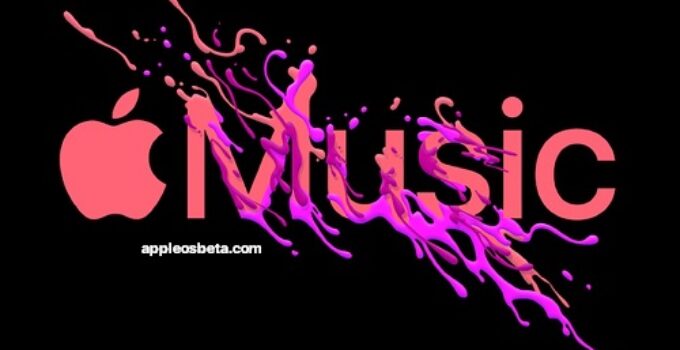Tips to help you master Apple Music. In this article, I will introduce the secret and little-known features of the Music app that you should use to master Apple Music.
How to take a Safari scrolling screen on iPhone?
Automatic music download for offline listening
In Settings → Music (Settings – Music), turn on the Automatic Downloads option so that any songs/albums added to your library will automatically download for offline listening. If your iPhone is running low on space, turn this option off to return to streaming music.
Listen to the highest quality music
In Settings → Music → Sound Quality (Settings → Music → Audio Quality), turn on the Lossless Audio option. This is quite similar to a photographic RAW image, the lossless audio format is lossless and preserves every detail of the original sound (24-bit/192 kHz) without clipping the hard to hear frequencies.
Nearly all music on Apple Music is lossless. However, this format consumes a lot of bandwidth even when you are listening online using Wi-Fi or 4G.
Thankfully, you can adjust the sound quality separately in these settings when you listen online and when you download and listen offline. For example, you can choose to only play lossless music while online using Wi-Fi, and when offline, choose only high quality to save bandwidth.
Lossless only works with wired headphones. Turn it off if you use AirPods or other wireless headphones as it’s not worth the extra storage and bandwidth.
Adjust EQ
Some people don’t even know that they can adjust EQ (equalization) when listening to music on iPhone, iPad. This feature is located in Settings → Music → EQ (Settings → Music → EQ), you can choose one of the adjustments that Apple has made available.
If you like listening to a lot of bass, you can choose Boost Bass (Increase Bass), if you like listening to treble more, choose Treble Booster, … depending on your personal preferences.
EQ is off by default. I recommend turning it on and opening a track, then choosing one of the options to find the best EQ.
Turn on spatial sound
Most music on Apple Music is available in Dolby Atmos. Artists have re-edited much of their old work for this audio format, along with new albums coming out.
Basically, Apple has applied filters and sound effects to better separate vocals and instruments, they call it Spatial Audio, making the song you’re listening to as if it were being played. from around you.
To enable this feature, go to Settings → Music → Dolby Atmos (Settings → Music → Dolby Atmos), select Automatic.
Spatial audio only works on AirPods, AirPods Pro, AirPods Max and some Beats products (no music played from iPhone speakers). To adjust the spatial sound, long-press the volume bar in Control Center.
Manage sections at the top of the library
The Music app’s Library tab lists several options at the top including: Playlist, Artist, Album, and Song. But you can customize this section to your liking.
Click the Edit button in the upper-right corner of the Library tab, then select or rearrange the sections you want to display.
Sort playlist
By default, the Music app sorts your songs by artist name, but you can choose to sort by name or recently added.
Just select the tab Library – Songs (Library – Songs), then tap on Sort (Sort) in the upper right corner and choose how to sort the list by: Title (in alphabetical order), Already recently added (from recent to oldest) or Artist (in alphabetical order).
Sing along to your favorite song
Most Apple Music songs have time-synced lyrics. Just open a song, click on the icon in the bottom left corner, the lyrics interface will appear.
In addition, you can long press on a piece of text to share it on Insgram Stories or Facebook Stories.
Quick jump to the song’s album
If you want to see which album a song is on, just long-press on the song and select Show Album or tap the album art that appears at the top of the context menu. This will show you a list of songs from that album in your library. To display the entire list of songs in the album, press the line Show complete album (Show Complete Album).
Create a radio station
Back in the days of iTunes, there was a feature called Genius – which provided personalized recommendations based on the content in your music library and other factors. Now, iTunes is gone, but the idea behind Genius lives on.
To listen to songs similar to the artist, song, or genre you’re listening to, tap the three-dot menu (…) on the playing screen and select Create Station.
Create cover art for playlist
To make it easier to distinguish your playlists visually, upload your custom cover art to Apple Music. Select Playlist in the Library tab and select the desired playlist, then tap the three-dot menu (…) and select Edit.
Tap the camera icon in the cover photo to display options to take a photo, or choose a photo from your library to use as a playlist cover photo.
Search music by mood
Sometimes you just want to listen to something that suits your mood right? Apple Music might surprise you with its hundreds of mood playlists that you can access by:
Search tab (Search): select categories such as Relaxation, Deep Sleep, Sadness, Concentration, etc.
Explore tab (Browse): item Add to Playlist relax or scroll to the bottom and select Relax.
Try Mix playlists
In addition to playlists created by Apple editors, Apple Music also features algorithmically generated, dynamically updated, and personalized playlists just for you. For example, one of them is filled with the best of what your friends are listening to.
These playlists are called Mix, located in the Listen Now tab in the Music app, if you don’t see them, scroll down to the For You section.
This playlist will feature new songs from other artists that Apple’s algorithm thinks you’ll like, updated every Friday or Monday. There are four playlists including Favorite Mix, Wake Up Mix, Relax Mix and New Music Mix.
Explore the top rankings
One of the best ways to discover new music is through exploring the charts in the Music app, which lists the most streamed and most popular songs. In fact, I often go to these chart playlists to find the most popular songs of the day.
Go to the Search tab, then select Charts. Here you will see a list of trending songs, city charts, top 100 from many different countries, top playlists, top albums, and more.
This chart will include songs in many genres. Therefore, to see the chart for the genre of music you like, tap All Genres in the upper right corner and select a listed genre like Pop or K-Pop.
Don’t miss the radio station
Besides the Mix playlists that the algorithm suggests, I personally love listening to pre-made radio stations. It includes both my favorite songs and new songs that I might like, every time I don’t know what to listen to, I turn on this radio to let it play music on its own.
To listen to your radio, go to the Listen Now tab, scroll down to the Station For You section, and select … Radio to start listening.
Full screen album art on lock screen
On iOS 16, Apple allows you to zoom in or out of the cover image of the currently playing song right on the lock screen with a nice effect.
Just tap on the mini album art in the music control interface on the lock screen to enlarge the cover photo. In this mode, the album art is much larger and the background color and controls will change color to match the album art.
To return to the old view, tap the cover photo.
Epilogue
Hope you learned something new by reading this article. The Music app could be designed better — especially because some of the features in the app are deep in the menus or too hard to discover on your own, so you’ll need help like this article.



